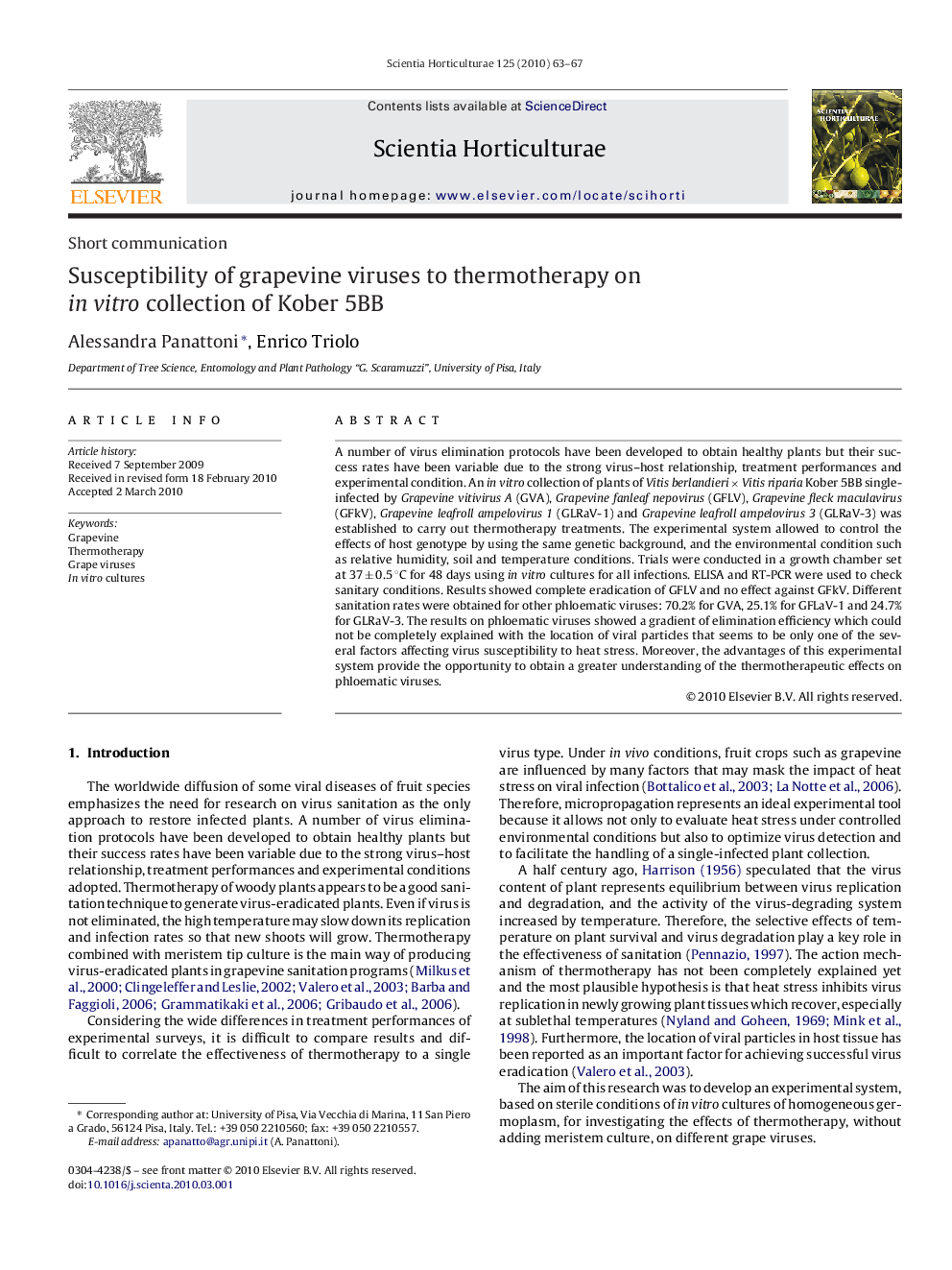| Article ID | Journal | Published Year | Pages | File Type |
|---|---|---|---|---|
| 4568894 | Scientia Horticulturae | 2010 | 5 Pages |
A number of virus elimination protocols have been developed to obtain healthy plants but their success rates have been variable due to the strong virus–host relationship, treatment performances and experimental condition. An in vitro collection of plants of Vitis berlandieri × Vitis riparia Kober 5BB single-infected by Grapevine vitivirus A (GVA), Grapevine fanleaf nepovirus (GFLV), Grapevine fleck maculavirus (GFkV), Grapevine leafroll ampelovirus 1 (GLRaV-1) and Grapevine leafroll ampelovirus 3 (GLRaV-3) was established to carry out thermotherapy treatments. The experimental system allowed to control the effects of host genotype by using the same genetic background, and the environmental condition such as relative humidity, soil and temperature conditions. Trials were conducted in a growth chamber set at 37 ± 0.5 °C for 48 days using in vitro cultures for all infections. ELISA and RT-PCR were used to check sanitary conditions. Results showed complete eradication of GFLV and no effect against GFkV. Different sanitation rates were obtained for other phloematic viruses: 70.2% for GVA, 25.1% for GFLaV-1 and 24.7% for GLRaV-3. The results on phloematic viruses showed a gradient of elimination efficiency which could not be completely explained with the location of viral particles that seems to be only one of the several factors affecting virus susceptibility to heat stress. Moreover, the advantages of this experimental system provide the opportunity to obtain a greater understanding of the thermotherapeutic effects on phloematic viruses.
